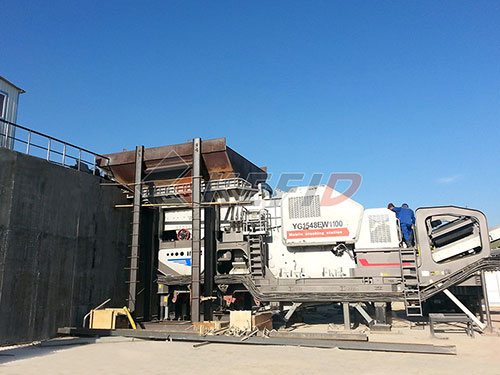Rock Crusher Machine For Sale
Finding the Right Rock Crusher for Your Operation
The foundation of countless construction projects, mining operations, and infrastructure development lies in efficiently processing raw rock into usable aggregate. This essential task falls to the workhorse of the industry: the rock crusher. If you're in the market for one, navigating the diverse range of rock crushers for sale requires understanding your specific needs and the capabilities of different machines.
Why Invest in a Rock Crusher?
Purchasing a rock crusher represents a significant investment towards operational efficiency and cost control. benefits include:

1. On-Site Processing: Eliminate reliance on external aggregate suppliers and their associated transportation costs and delays. Produce exactly what you need, when you need it.
2. Material Versatility: Process various materials like granite, limestone, basalt, concrete, asphalt, and demolition debris into valuable products.
3. Customizable Output: Achieve precise particle sizes (from coarse rip-rap to fine sand) required for specific applications like road base, concrete mix, railroad ballast, or landscaping.
4. Cost Savings: Long-term savings on material procurement and waste disposal (through recycling demolition concrete/asphalt).
5. Increased Project Control: Manage your aggregate supply chain directly.
Types of Rock Crushers Available

The right machine depends heavily on your material characteristics (hardness, abrasiveness), required output size, production volume goals, mobility needs (portable vs. stationary), and budget.
1. Jaw Crushers:
Function: Primary crushing stage; uses compressive force between a fixed and a moving jaw plate.
Best For: Hard rock applications; large feed size reduction; producing relatively coarse output.
Output Size Range: Typically 5" - 6" down to about 1".
Common Configurations: Stationary plants or highly mobile track-mounted units.
2. Cone Crushers:
Function: Secondary or tertiary crushing; gyratory compression within an eccentrically rotating mantle against a concave bowl liner.
Best For: Producing well-shaped cubical aggregates at medium to fine sizes; hard and abrasive rocks.
Output Size Range: Highly adjustable from coarse (like jaw output) down to very fine sands (<3/8"). Often used after jaw crushers.
Feature: Adjustable closed-side setting (CSS) controls final product size.


